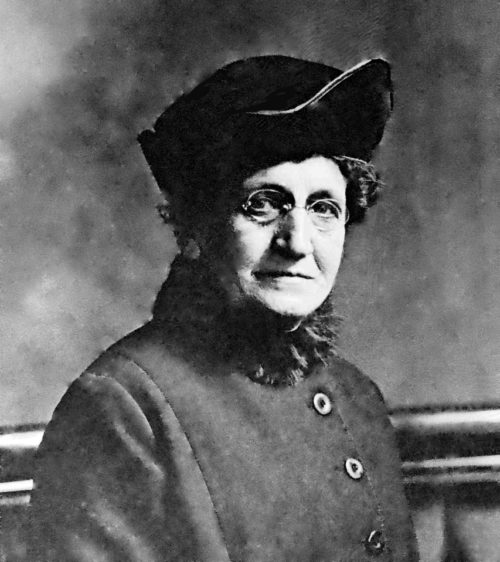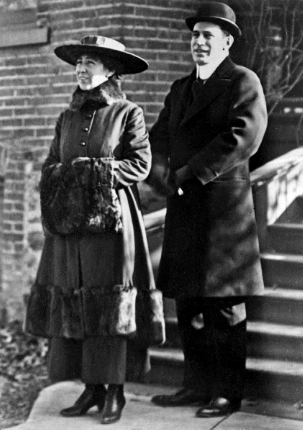After her work in campaigning for women's suffrage, Jeannette Rankin had a few options of what to do next; continue to work with the National Woman's Suffrage Association for Women's Suffrage, attempt to change other social legislation, or campaign for a position in Congress. She chose to pursue a career in the House of Representatives. Her decision was influenced by a Colorado journalist, suffragist, and political candidate that she met while campaigning for women's suffrage; Minnie Reynolds.

Minnie Reynolds
Colorado Virtual Lbrary
"The primal motive for my seeking a seat in the national Congress is to further the suffrage work and to aid in every possible way the movement for nationwide suffrage which will not cease until it is won."
~ Jeannette Rankin

Jeannette Rankin with her younger brother
Wellington who supported her campaign financially.
Montana Historical Research Society Center
Along with supporting suffrage, she supported an eight-hour workday for women and child welfare laws. Thousands of women across Montana registered to vote so they could support Jeannette Rankin. On August 29, 1916, Rankin won the Republican nomination by over 7,000 votes. She proceeded on to the general election on November 6, 1916, knowing that she only had to finish first or second. The first reports of the election were that she lost, but four days after the election, on November 10, 1916, the final votes were counted, showing that she came in second by 6,354 votes.
Three articles detailing Jeannette Rankin's election into the House.
Neweumed.org, Library of Congress
Jeannette Rankin accepting a flag to celebrate the start of her first congressional term from Sergeant at Arms, Robert Gordon.
History, Art, & Archives: United States House of Representatives